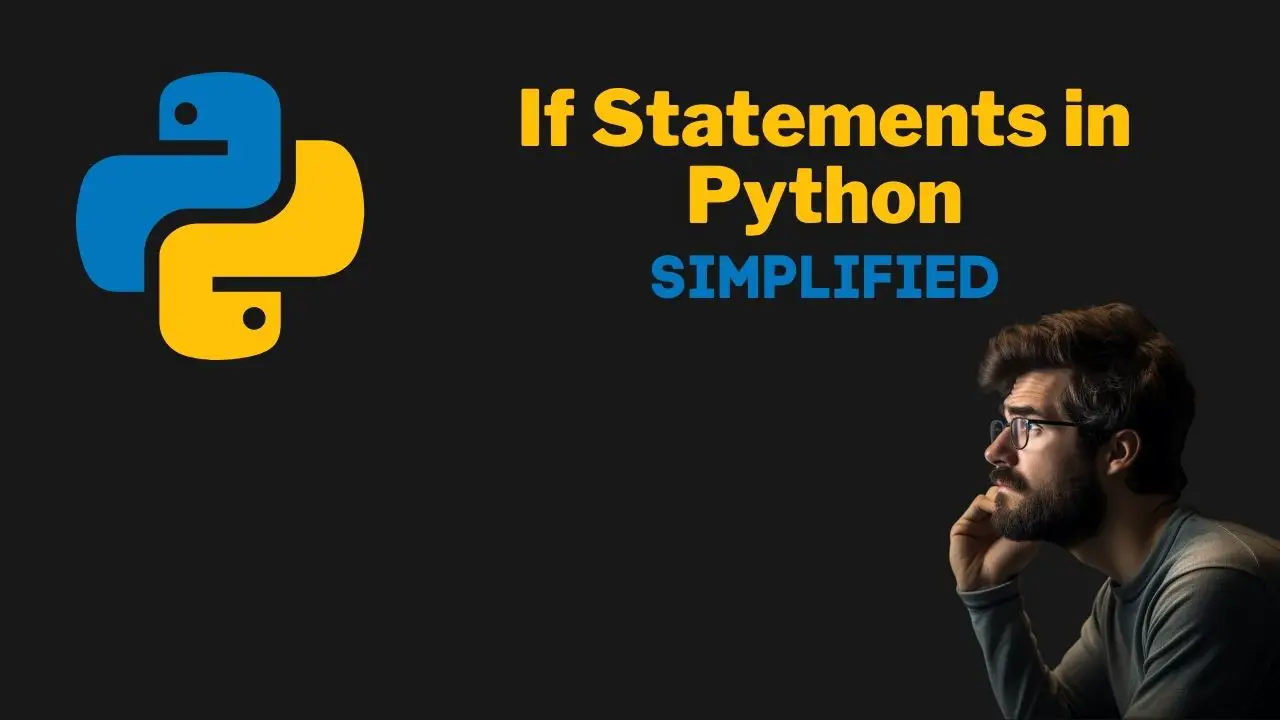When coding in Python, decision-making and flow control play a crucial role. The pivotal point of decision-making in Python and most programming languages is the “if statement”. If Statement Python enables the programmer to execute certain sets of code depending on conditions set.
While brushing up your knowledge on Python, do refer to this Python Tutorial Starter for a comprehensive understanding of basics. Now let’s delve into If Statement Python with its syntax, practices, and examples.
Table of Contents
- Understanding the If Statement in Python
- The Else and Elif Clauses in If Statement Python
- Nesting If Statements in Python
- Python Variables and If Statements
- Challenge & Solution
- Conclusion
Understanding the If Statement in Python
The If Statement Python is a conditional operator that checks certain conditions and executes the associated code block if the condition holds true. If the condition does not hold true, Python overlooks the associated block of code. The structure of an If Statement looks something like this:
if condition:
#blocks of codes
Code language: CSS (css)In this structure, “condition” stands for any Boolean expression that can evaluate either as True or False. Python follows a procedure of indentation to differentiate the blocks of codes. Any misalignment can lead to Syntax Error.
Further reading on Python syntax can be enhanced with this Python Syntax Guide.
The Else and Elif Clauses in If Statement Python
Apart from the “If” statement, Python also offers the “else” and “elif” clauses for more complexity.
“Else” clause complements the “if” statement, and the associated block of code executes if the “if” condition evaluates False.
if condition:
#blocks of code
else:
#blocks of code
Code language: PHP (php)On the other hand, “elif” is the short form of “else if”. It allows you to check multiple expressions for TRUE and execute the first one that is TRUE.
if condition1:
#blocks of code
elif condition2:
#blocks of code
else:
#blocks of code
Code language: PHP (php)Nesting If Statements in Python
Python allows the programmers to nest “if” statements within “if” statements. A nested if statement allows you to check for another condition after the initial condition is found TRUE.
if condition1:
#blocks of code
if condition2:
#blocks of code
else:
#blocks of code
else:
#blocks of code
Code language: PHP (php)Python Variables and If Statements
Python variables play a crucial role in conjunction with if statements. The variables are often part of the conditions being checked in the if statements. This Python Variables Guide offers a detailed explanation on dealing with Python Variables.
Challenge & Solution
Challenge: You have two variables, a=5 and b=10, write a Python program using the “If Statement Python” to compare the two variables and print the larger number.
Solution:
a=5
b=10
if a>b:
print(a)
else:
print(b)
Code language: PHP (php)This program checks the condition: if a>b, and if it holds true, it prints a; otherwise, it prints b. Here Python compares the numbers and prints the larger one.
Conclusion
Python and its if statement offer a simple method of decision-making and flow control in programming. You can add layers of complexities as you delve deeper into Python’s bag of tricks. Yet the simplicity is such, even a beginner can grasp it quickly with enough practice. Explore more about Python and its concepts with this Guide to Python.

